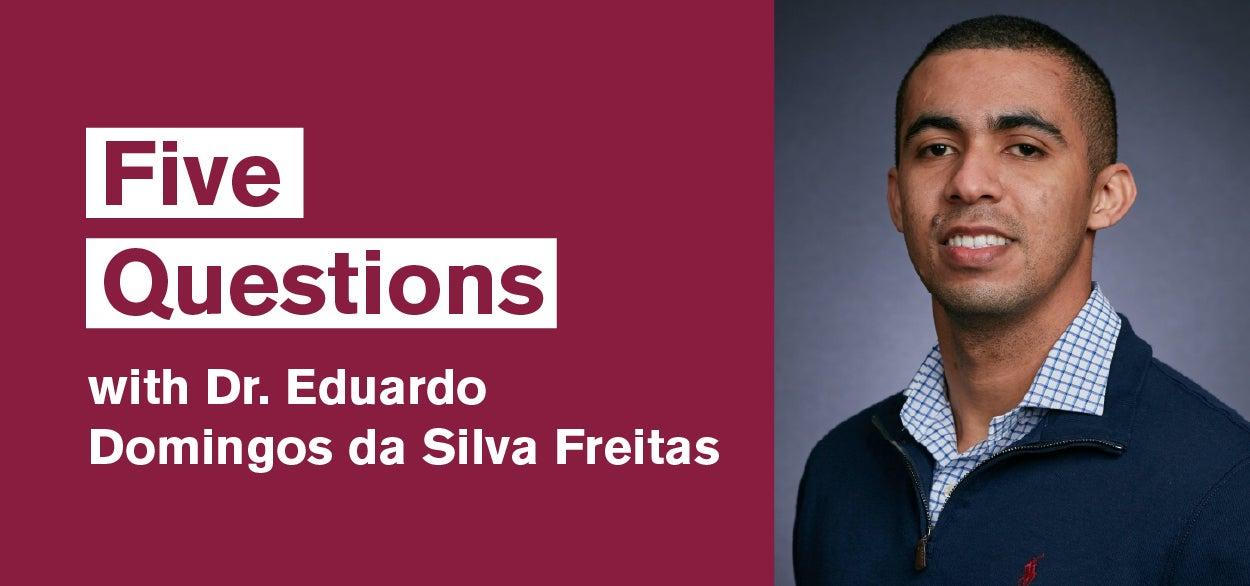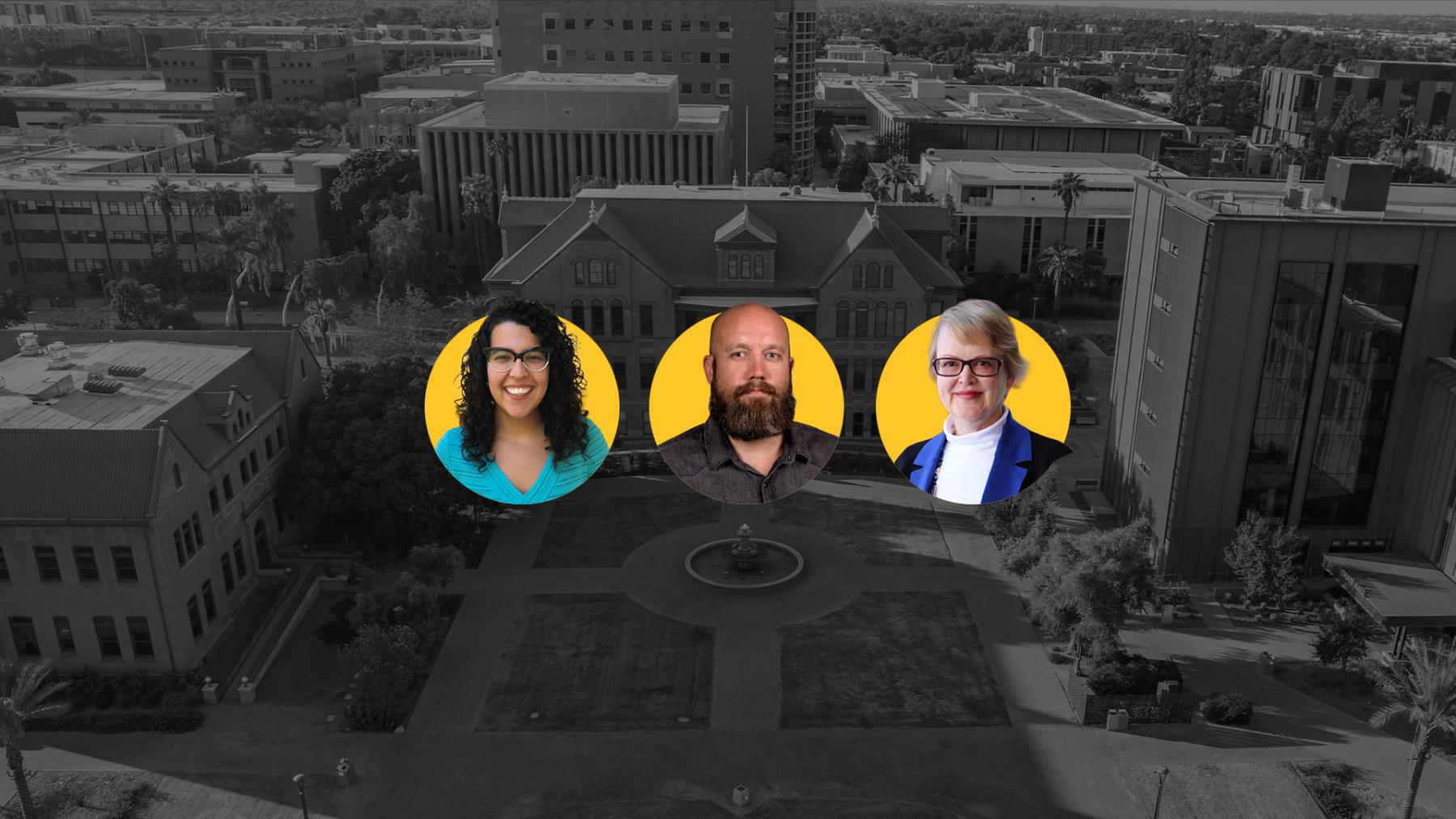
Five questions with postdoc Eduardo Domingos da Silva Freitas
1. Tell us a little about yourself.
I was born and grew up in the state of Paraíba, located in the northeastern portion of Brazil. That's where I got my undergraduate degree in physical education from UNIPÊ in 2011. Physical education is similar to the health and exercise science and kinesiology majors offered by many schools here in the U.S. After graduating from college, I joined Dr. Socorro Cirilo’s lab at Federal University of Paraíba, where I started experiencing research for the first time.
In 2014, I was accepted into the master’s program in Kinanthropometry and Human Performance within the same lab and school and graduated in the spring of 2016. Right after getting my master’s, I was accepted as a doctoral student at the University of Oklahoma (OU) within the Department of Health and Exercise Science, which I started in the fall of 2016. In addition to teaching several undergraduate level courses, working under the mentorship of Dr. Michael Bemben, I performed research and published several manuscripts on the effects of resistance exercise combined with blood flow restriction on physiological parameters on healthy and clinical populations, particularly people living with multiple sclerosis. I graduated from OU in the spring of 2021 and moved to Arizona to start working as a postdoctoral research fellow at ASU under guidance of Dr. Christos Katsanos. My current lab is located in the Health Futures Center building in the ASU north campus, in Phoenix.
2. What made you choose ASU?
Towards the end of my PhD program, I started looking around, trying to decide my next step. I did apply for some positions in academia, but I felt like I needed some additional experience in the area of biomolecular physiology. I thought more experience would allow me to grow more as a researcher, so I started looking for some openings for postdoc positions that would help me accomplish that. Among the openings I found, there was one here at ASU, which I applied for. I was able to talk to Dr. Christos Katsanosmore about the position, his lab, and his research and left the meeting with the highest impressions of him, his lab, and ASU. Every day I feel more and more that deciding to come to work with Dr. Katsanos at ASU was the best decision I could have made.
3. Tell us about your research.
During my PhD program at OU, my research included people living with multiple sclerosis. Back then, my research focused on understanding the physiological effects and underlying mechanisms governing resistance exercise performed in combination with blood flow restriction (BFR). In lay terms, BFR resistance exercise simply consists of lifting weights while pressurized pneumatic cuffs, similar to the ones used to measure blood pressure, are placed around the exercising limb (arms or legs) and inflated to a specific target pressure, thus reducing blood flow to the muscle. This causes a build-up of metabolites within the muscle, which leads to an increase in muscle activation and an activation of biomolecular pathways that ultimately lead to an increase in muscle size. Importantly, BFR resistance exercise is performed using lower loads, which makes it an appealing training alternative to those populations that can’t withstand or are unwilling to lift heavy weights, but still desire to obtain the same positive adaptations (e.g., increase muscle size and strength) from traditional resistance exercise. In our lab here at ASU, our research consists of understanding how obesity affects skeletal muscle protein metabolism. There is currently growing evidence that obesity impairs muscle protein metabolism, but the precise mechanisms underlying such phenomenon are yet to be determined. Understanding how obesity affects muscle protein metabolism is important because it could help in the development of strategies to prevent and mitigate the effects of obesity. Most research performed in our lab includes human subjects and makes use of invasive techniques such as collection of venous blood samples and muscle biopsies. Our lab makes use of world-class advanced techniques, which include, but are not limited to western blot, PCR, enzyme-linked immunoassays, etc.
4. What's your dream job?
My greatest passion has always been for research. As an undergrad, I knew that is what I wanted to do for a living. In my opinion, doing research is one of the best jobs in the world, because you have the privilege to do what inspires and excites you. Nobody tells you what to do. You are independent and driven solely by your curiosity and desire to make your contribution to science. With that being said, a position in academia would most likely be the best job for me. This would allow me, not only to continue doing research, but to integrate that with teaching and mentoring. That way, hopefully, I can inspire others to become as passionate about research as I am.
5. What's your favorite outdoor activity or sport?
I have a couple of hobbies, but my favorite outdoor activity is playing volleyball, mostly indoor volleyball. Even though I am from Brazil, I cannot play soccer, so I had to take advantage of my height and stick to volleyball. There are a lot of community centers, clubs, and volleyball leagues around here so it is always easy to find a place to play, which I usually do about three times a week. I also love playing guitar. This is by far my favorite hobby! I am a big John Mayer fan, so I can spend countless hours on weekends learning and practicing his songs. Playing guitar also kind of helps relieve any built-up stress. I also play piano, but I am not nearly as good. Lastly, I play chess, but since I have not had much time to dedicate to it, I am currently stuck as a 1000 level player.
More stories from the Graduate Insider

Graduate education is an adventure
About eighteen months ago, I set out on a journey walking the islands of the Dodecanese during a sailing trip in Türkiye and Greece with several friends. Along the way, I found winding paths, timeless villages and breathtaking views of sea and sky. That experience got me thinking about how adventure shows up in other parts of life, especially in learning.

From practice to presentation: How to deliver a winning faculty job talk
Giving a job talk can feel like the most high-stakes presentation of your academic job search. It’s not just a research seminar—it’s your opportunity to demonstrate vision, communication skills, and fit within a department. In a recent Lunch and Learn, faculty members Associate Professor in School of International Letters and Cultures, Anita Huizar-Hernandez, Professor in School of Life Sciences Jeffrey Jensen, and Professor in Department of Physics Patricia Rankin shared concrete strategies to help graduate students and postdocs succeed as future faculty candidates.

Mentoring matters: Mentoring students through impostor syndrome
Graduate education can be an exhilarating journey — but for many students, it also brings moments of self-doubt and uncertainty. In our recent Mentoring Matters panel, “Mentoring Students Through Impostor Syndrome,” Graduate College Senior Associate Dean Dr. Lisa Anderson sat down with Dr. Rebecca Wachs, Associate Professor in the School of Biological and Health Systems Engineering, and Dr.